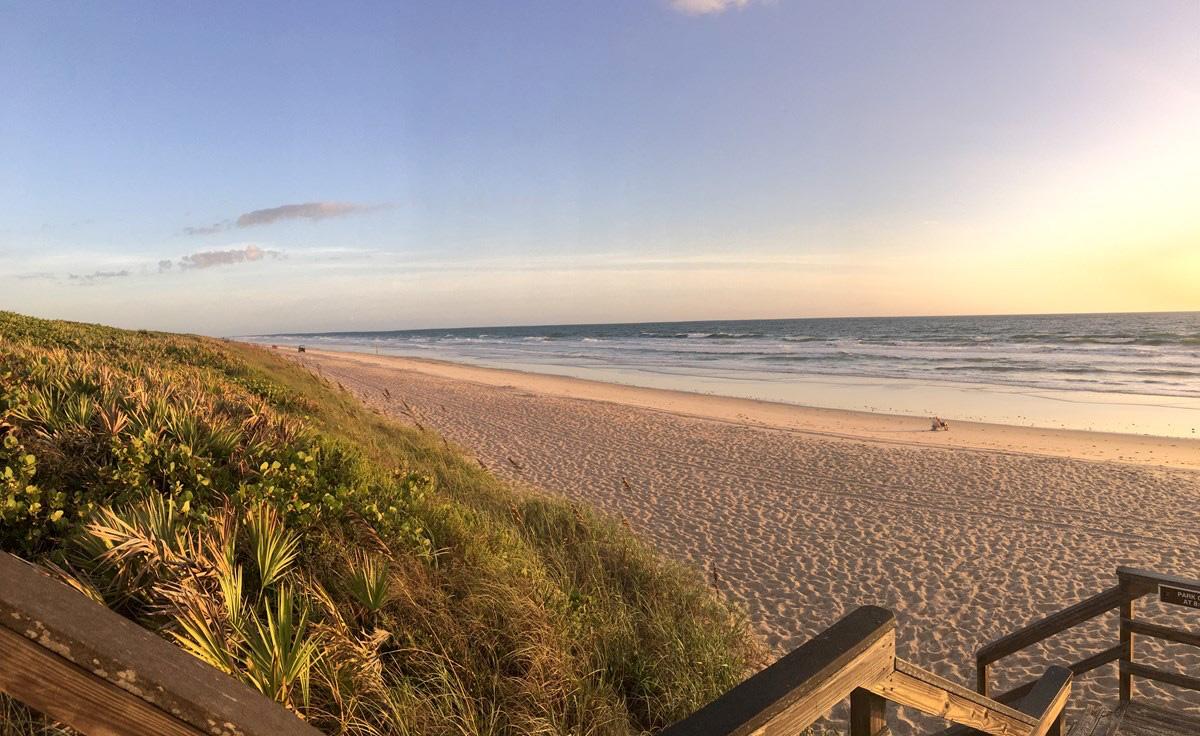
Winter is a perfect time to visit Canaveral National Seashore/NPS
Canaveral National Seashore: In The Shadow Of Rockets
By Fred Mays
Winter brings a transformation to Canaveral National Seashore in Florida. In the cooler months the beach is not the main draw. Beaches that are typically crowded in the summer have fewer people in the cooler winter months. But the seashore is far from desolate.
According to national seashore spokesperson Laura Henning, winter visitors come to fish, camp, kayak, and go on group “Walk and Talk” hikes with rangers.
“March is actually one of our busiest months,” says Ms. Henning. Family spring-break trips bring crowds, particularly to the north entrance to the park, at New Smyrna Beach. That’s where the most back island adventures await.
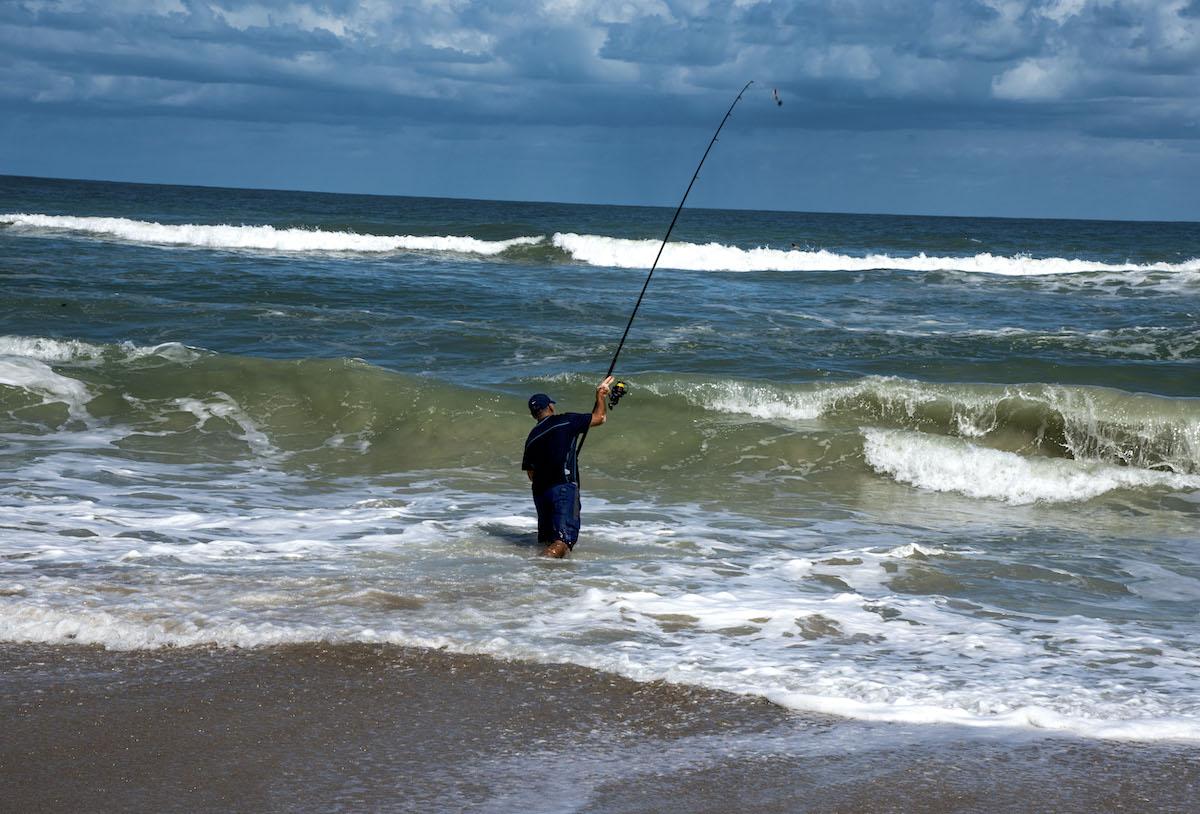
Surf fishing is one of the popular pastimes at Canaveral National Seashore/Fred Mays
Camping at primitive sites in the Mosquito Lagoon actually picks up in January. It’s still comfortable weather and mosquitos are less bothersome. You should still take repellent along.
“The lagoon didn’t get its name for nothing,” laughs Henning. The 14 campsites, one per island in the lagoon, can only be reached by kayak or canoe. They fill quickly. Each island has a picnic table and a fire ring, but other than that you’re on your own. Food, water, firewood all have to be brought with you. And everything you bring has to be taken out when you leave. Reservations are made online at recreation.gov.
Wintertime means less beach traffic and more maintenance. Crossovers over the dunes at the parking lots need to be replaced every 12-15 years or so, and there are 18 of them. That work can take six to eight months, during which the beach in that area is closed.
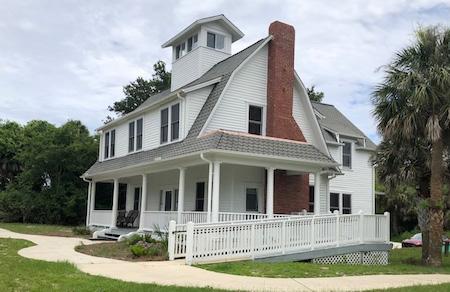
The Eldora Home/NPS
A major backlog of maintenance work is scheduled for the three historic structures in the seashore. The Doris Leeper and Eldora homes are on the lagoon side of Apollo Beach. The Leeper home is named after a prominent artist and environmentalist who fought to get the seashore designated in 1975. The Eldora was a stopover spot for trade boats that traveled the lagoon in the early 1900s.
Another historical site is at Seminole Rest on the mainland side of the seashore. It features middens of oyster shells that Indians piled up over centuries. White settlers over a century ago built their homes atop the middens, which tower as much as 40 feet. Many middens were lost when they were used for road construction in the early days of settlement on the island.
The seashore stretches 24 miles along the central Florida coastline. It is the longest stretch of undeveloped beach on Florida’s Atlantic coast. It reaches into two counties and attracts nearly two million visitors a year with its close proximity to Orlando. Most of those folks come in the summer…June is the busiest month… but being Florida, there are some good beach days in the winter, too.
The seashore has three distinct sections. Playalinda Beach on the southern end abuts the Kennedy Space Center launch towers. In fact you can see the towers from the beach access road. They’re so close that the beach is closed for several hours prior to launches from pad 39A. The Playalinda beaches draw about two-thirds of the seashore visitors each year. Access to Playalinda is through the town of Titusville.
The northern end is known as Apollo Beach, and is reached via New Smyrna Beach. It only has five parking lots along the beach, and they fill early, especially on weekends. There are historical sites and walking trails on the back island.
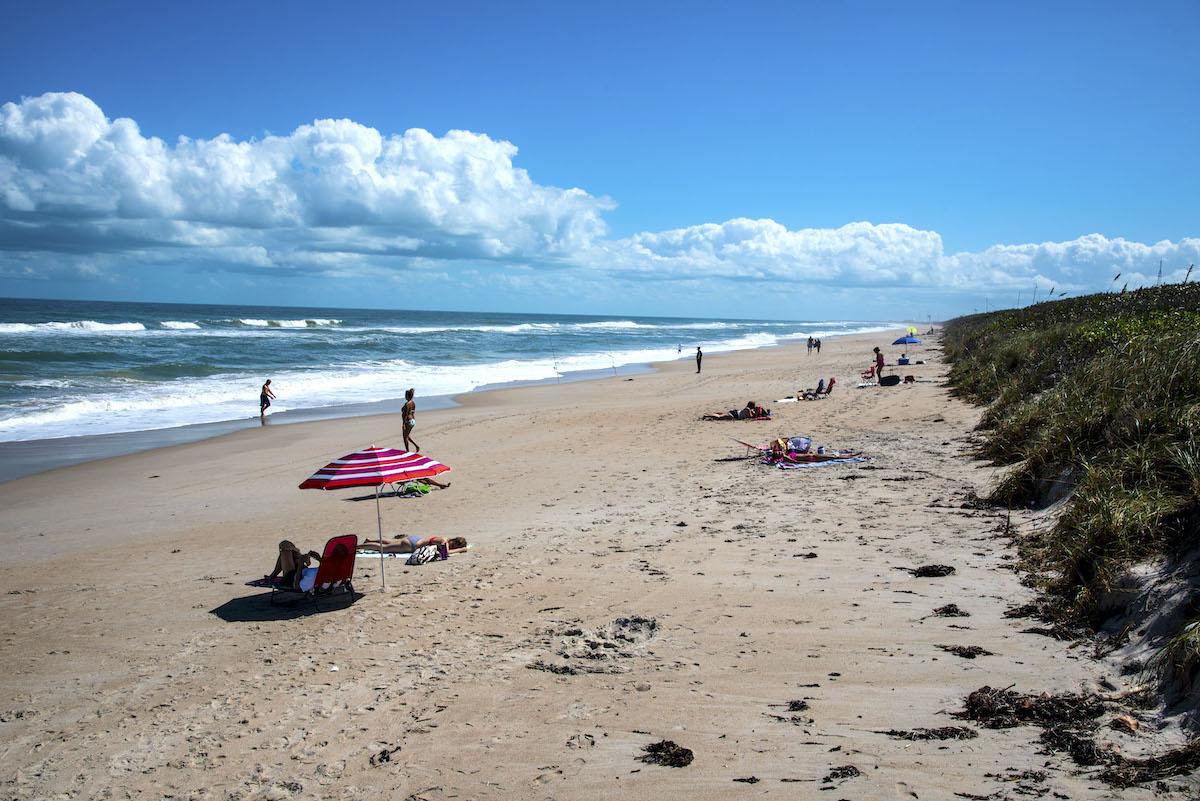
The fall and winter months bring much less traffic to the national seashore/Fred Mays
The central section of beach is called “the Klondike” and it is completely wild. There is no access by car. You have to walk south from Apollo Beach or north from Playalinda Beach, or come by boat. The Klondike area stretches for about 12 miles and sees few visitors. Don Moore of Orlando is a frequent hiker. According to Don, it’s peaceful, “quiet with no cars, just like it was a thousand years ago, nothing has changed.”
His advice to other hikers is to watch the tide charts, plan your hike at low tide, when you have more beach to walk on, without getting into the soft sand of the dunes. Bring water and sun block, and wear a hat.
The Klondike area has wildlife. Raccoons, bobcats, coyotes, and some feral hogs. During turtle nesting season, roughly beginning in March and lasting into the early fall, rangers travel the beach area daily to spot turtle nests and put a mesh cover over them to protect the eggs from raccoons.
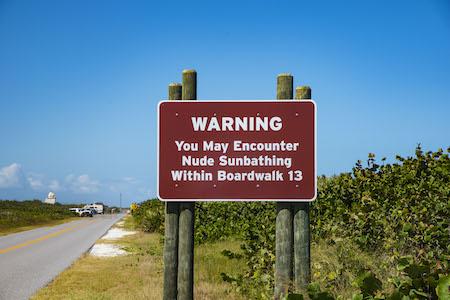
You need to pay attention to the signs if you don't want to be surprised/Fred Mays
Hikers and beach goers in general need to be aware that there are nude beaches on the north and south ends of the Klondike. Warning signs are posted on park roads. Generally the nudists mind their own business and there is little interaction with the regular crowd.
The surf at Canaveral can be strong, so beware of rip currents. There are some surfers in wetsuits in the winter, but not many. There are usually lots of surf casters along the shore.
Because of COVID, traffic at the seashore in 2020 was about half what it is in a normal year. The seashore was actually closed for two months in the spring.
If you want to shy away from crowded tourist beaches, Canaveral National Seashore offers a little sand dune solitude in the winter.






Comments
Only in America would you need to have giant signs "warning" people about nudity. lol